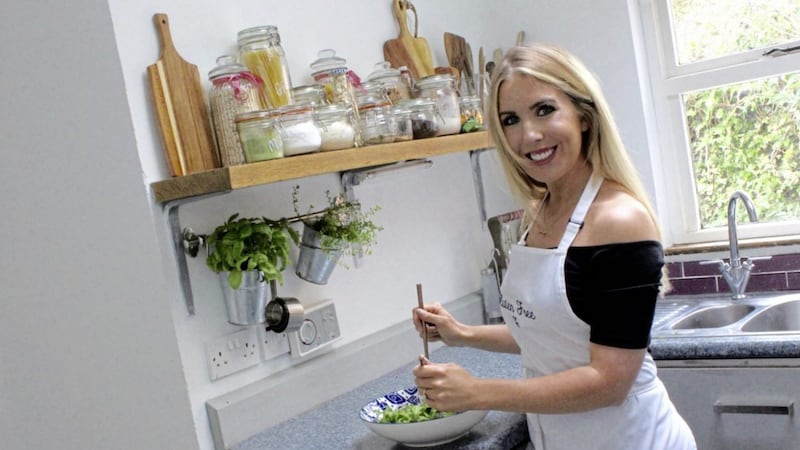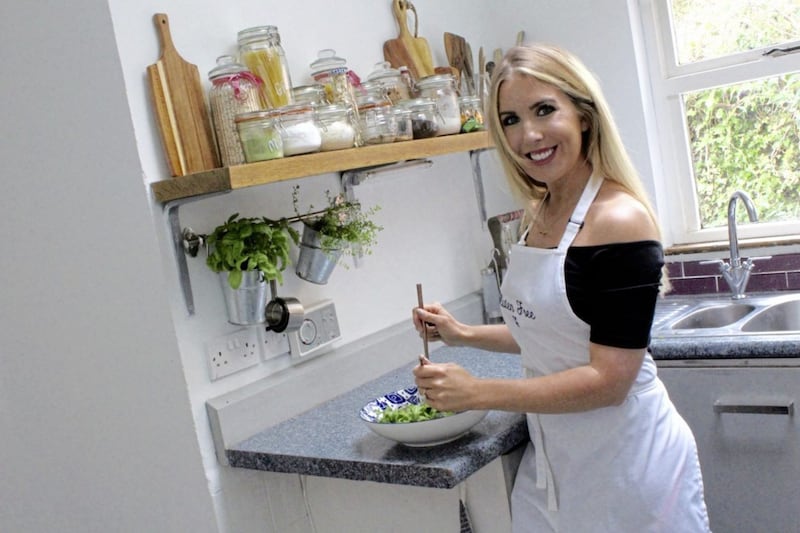What particular plans do you have for the new year and are the holidays a time you enjoy?
I don't believe in new year resolutions, but I usually get around to a 'detox' in February when I'll go to the gym. January is a month to eat left-over Quality Street and go away for a spa break, somewhere nice. Christmas though, is my favourite time of year and this year was special as my new husband (professional golfer Andy Boyle) joined the family celebrations. We are a family of foodies, but also a family with two people who have coeliac disease and two who have dairy intolerances, so Christmas and new year celebrations are not without certain menu challenges.
Is this time of year an especially difficult/challenging time for people with coeliac disease?
It could be a huge challenge if you aren’t confident in the kitchen. Most traditional Christmas recipes contain gluten that people wouldn’t think of – potatoes are dusted in flour, stuffing contains breadcrumbs, gravy contains stock cubes – so it involves a lot of recipe pre-planning to work out which gluten-free ingredients will act as good alternatives. There are also many great alternatives which can be purchased off the shelf now.
Can you explain what coeliac disease is and the impact it can have on everyday life? What was your worst moment?
Put simply, coeliac disease is an autoimmune disease where gluten (the protein found in wheat, barley and rye) causes damage to the lining of the small intestine and inflicts symptoms similar to an allergic reaction if gluten is ingested. Each year, my reactions to gluten grew so severe that my stomach became badly inflamed and I experienced the symptoms of ‘being glutened’ with anything I ate – even if I had a cup of tea. Pre-diagnosis, I was so uncomfortable and couldn’t bear the thought of experiencing the pain of the stomach cramps and illness while at work, that I simply stopped eating during my working day. That was a very low point for me, because I love food so much, but my worst experience was going out for dinner in a Chinese restaurant and being offered a bowl of rice as the only gluten-free option.
Why do you think there are so many food allergies today – is modern living to blame, or the way food is processed, for instance? Could more be done on the medical side of things or in schools and workplaces?
We live in a society in Northern Ireland where our diet is very bread-based. Gluten is a difficult protein for the gut to break down, so, if eating bread-based breakfast, lunch and dinners, it is no wonder that it begins to build up in the system. It could be down to the fact that diagnosis is on the increase, rather than more people are actually having allergies or coeliac disease. Certainly, before I was diagnosed, I was misdiagnosed twice. I think the NHS is incredible and we are lucky to have it as a service, but I don’t think enough advice is given to coeliacs on nutrition.
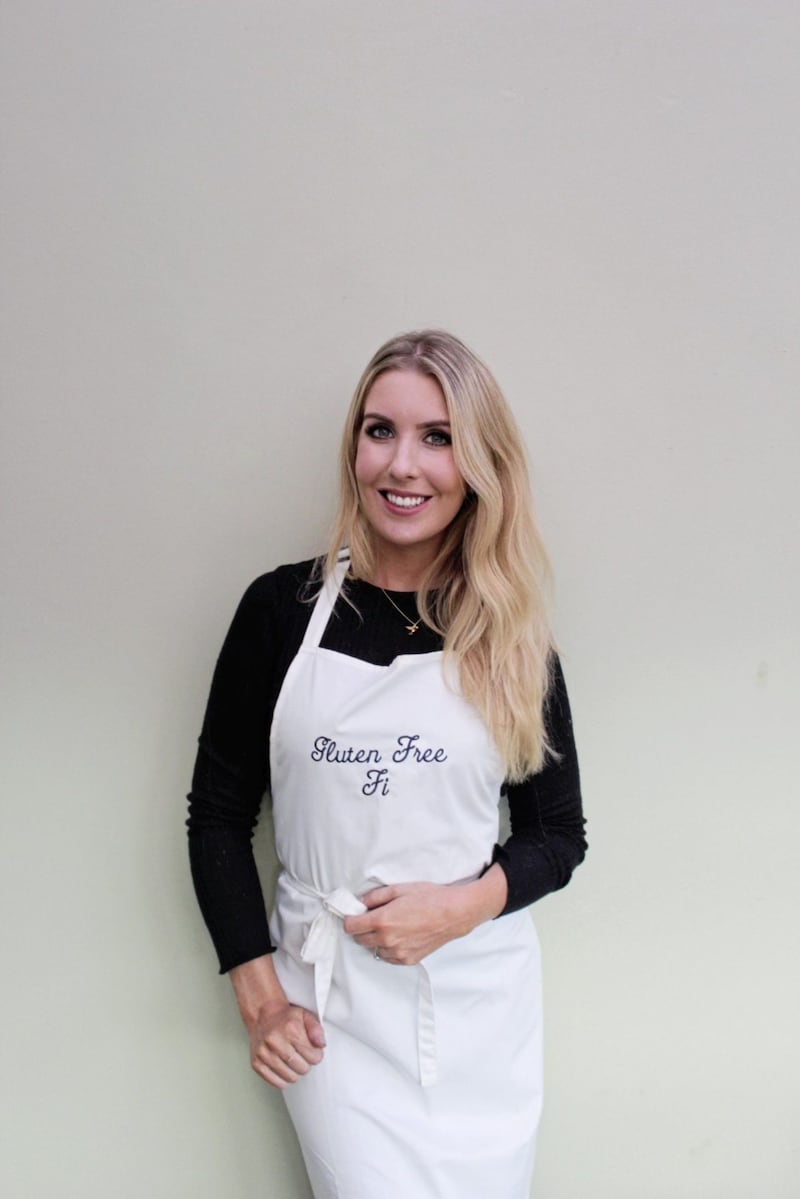
Any new developments in your blog?
I am focusing on a rebrand at the moment, which mainly involves creating a very user-friendly website so that people can easily find recipes and any information they are looking for. I initially started with an Instagram page, adding a picture of my recipe and writing the recipe underneath. I knew how difficult it must be for people who were newly diagnosed and who didn’t know what to cook and I just wanted to help other people in the same position as me. When I grew to 1,000 followers, more and more people were asking for my website address and I knew then it was the perfect time to expand. I am now at 36.5K followers and hopefully the expansion won’t stop any time soon. I have a full-time job as a buyer for a technology firm in Belfast and blog in my spare time, which means I pretty much do an 8am-10pm job, plus weekends, but I won’t complain because I love it.
You were diagnosed three-and-a-half years ago – how has life changed?
It was honestly the most positive thing to happen. I was in chronic pain and feeling very low and really needed something to make me feel better. After a few weeks on a gluten-free diet, I was like a new person. I started my blog to document my journey and to keep it as positive as possible, so I didn’t mope about not being able to eat a fresh baguette. I am now so much more confident than I was when I was first diagnosed. Before, I would almost feel apologetic when asking if a restaurant had anything gluten-free on the menu; now when I ask, I feel like I am asking on behalf of all of the people who have contacted me over the years. I have confidence to speak to the management team in a restaurant, or the chef, to see if staff need to be educated on coeliac disease, or if there is a way they can improve. Luckily, restaurants in Northern Ireland are so open to change and mostly happy to help.
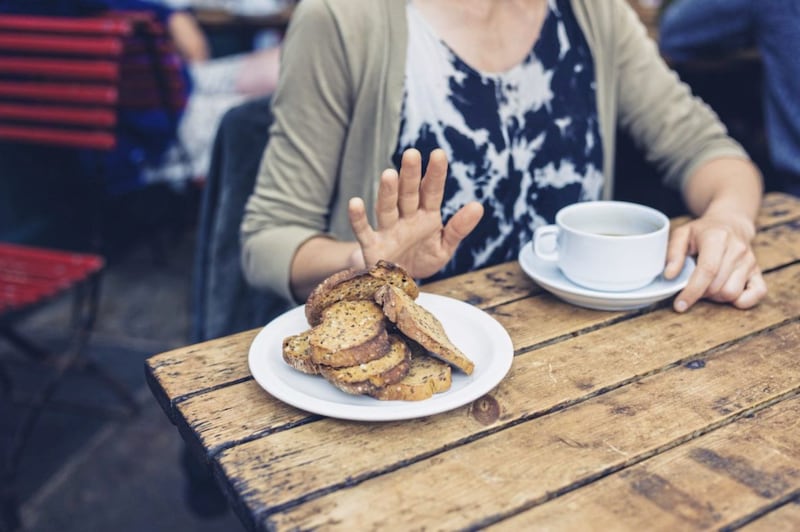
It took seven painful years for you to get your diagnosis – is that common and how frustrating was it, not knowing what was wrong?
Yes, it is common, as there are so many symptoms of coeliac disease. At one stage I was misdiagnosed with a rare disease called eosinophilic enteritis and was taking 28 tablets every day. That was the most frustrating time because I was taking all of the tablets, but the pain never eased. It took seven years for my diagnosis, but the average time to get diagnosed is 13 years, so perhaps I was lucky.
What’s next for you and what are your future ambitions?
After my new website is live, I would love to start sharing free, downloadable recipe e-books for my blog readers. Beyond that, I am just happy to take the challenges presented to me by my kitchen.
TASTY GLUTEN-FREE FI RECIPE:
One Tray Mexican Chicken
(Serves 2)
2 Chicken breasts, cut into strips
½ White onion, cut into chunks
1 Pepper (I used ½ yellow & ½ red for a mix of colour), cut into chunks
15 Cherry tomatoes (2 handfuls)
200g Kidney beans, drained (½ a tin)
2 Garlic Cloves, sliced very thinly
1 tbsp smoked paprika
1 tbsp cumin
½ tsp cayenne pepper
¼ tsp cinnamon
¼ tsp sea salt
1 tbsp olive oil
Juice from ½ a lemon
Juice from ½ a lime
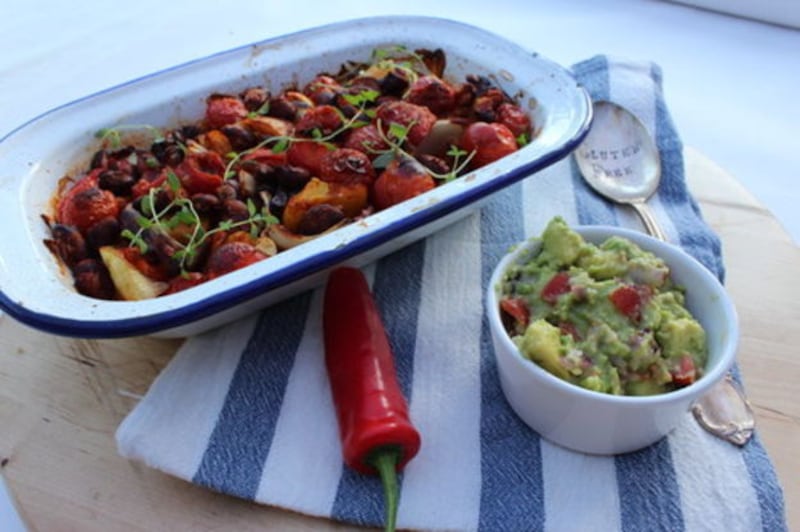
Preheat oven to 180C. To an oven proof dish, add the chicken strips, chunks of white onion, the pepper chunks, cherry tomatoes, the kidney beans and the thin garlic slices.
In a bowl, mix the smoked paprika, cumin, cayenne pepper, cinnamon and salt. Add the olive oil, the lemon juice, the lime juice and stir well. Drizzle the sauce over the chicken and veg and cover with foil. Place in the preheated oven and cook for 35 mins.
When the chicken is ready, top with some fresh herbs and serve with my chunky guacamole.
:: For more recipes and advice see glutenfreefi.com
